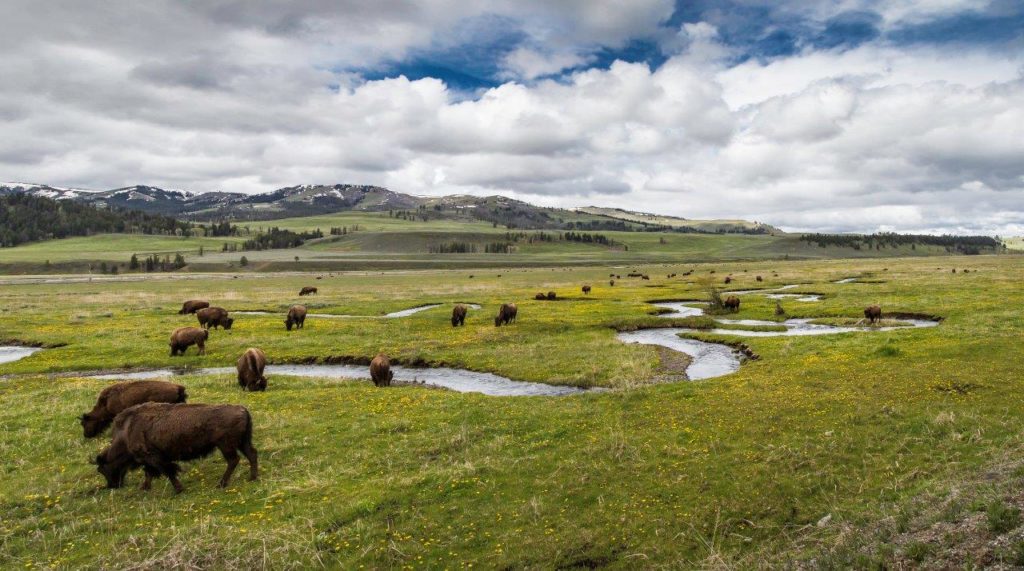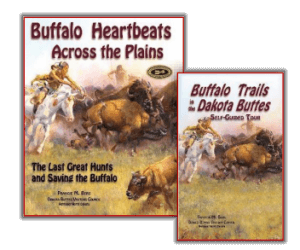
Buffalo graze along Rose Creek in the Lamar Valley. New research shows benefits of bison to summer plant growth
Biologists from the National Park Service, U.S. Geological Survey, and the Universities of Wyoming and Montana published their findings of a 10-year study about bison migration and grazing in Yellowstone National Park in the Proceedings of the National Academy of Sciences.
The findings show that wild bison shape vegetation cycles and stimulate growth throughout the summer. Scientists discovered, with the help of NASA satellites, that areas grazed intensely by larger groups of bison greened-up earlier, more intensely, and for longer durations each year.
The study also suggests that bison migrate differently than other species because of how they graze. Frequently they returned to the same areas of the park, which kept plants in a growth cycle, providing the most nutritious food for migrating animals. Evidence over the last decade supports that.
Migrating ungulates, or hooved mammals, follow the wave of spring plant growth.
Bison begin their migrations by following spring green up but their intense grazing lets them fall behind the wave of spring.
These findings result from a decade of research on Yellowstone bison by National Park Service biologists which included putting GPS collars on bison, setting up field experiments to evaluate plant growth and grazing intensity, and collecting dung and plant samples.
“Whereas migratory mule deer closely choreograph their movements so they are in synchronization with the flush of fresh green grass as it moves up the mountain, bison movements are not so constrained.
“They make their own fresh grass by grazing intensely in large aggregations,” said Dr. Chris Geremia, lead author of the study and senior bison biologist at Yellowstone National Park.
That finding sets bison apart from other North American ungulates.
During the study, comparing plots among fenced and grazed areas showed grazing at high intensity delayed plant maturation by stimulating plants to produce new young shoots after being grazed.
The bison then frequently returned to graze the same areas, keeping plants growing, although the plants never appear more than a few inches tall. Short, young plants provide the most nutritious foods for migrating animals.
“I commend Dr. Geremia and our partners for completing this incredibly in-depth study,” said Yellowstone National Park Superintendent Cam Sholly.
“These unprecedented findings teach us about the complexities of wild bison and underscore the critical ecological role they play on the Yellowstone landscape.”
The bison population in Yellowstone is one of the only free-ranging populations in North America. They migrate more than 60 miles in the park.
(Proceedings of the National Academy of Sciences, Nov. 20, 2019.)

Francie M Berg
Author of the Buffalo Tales &Trails blog



